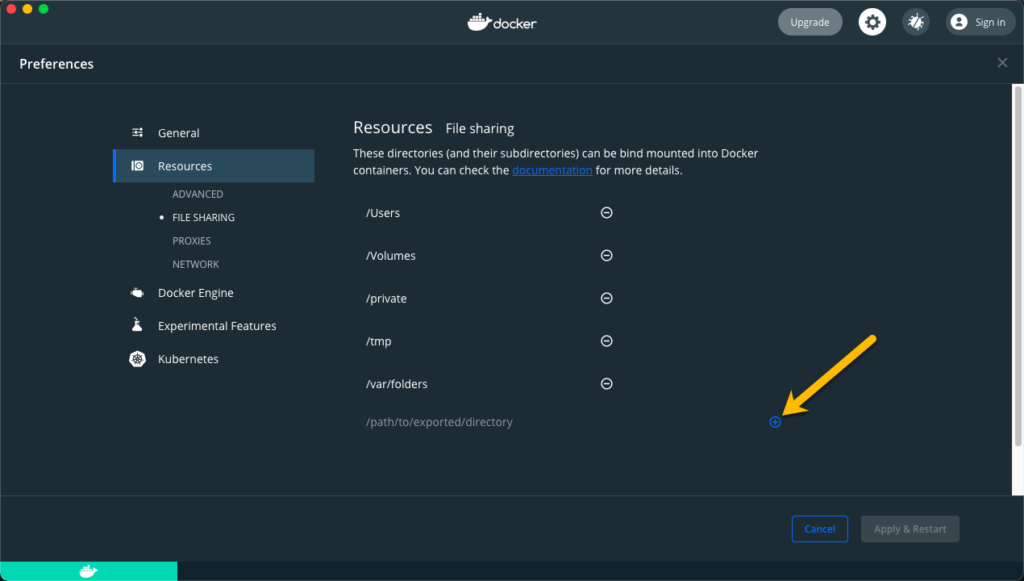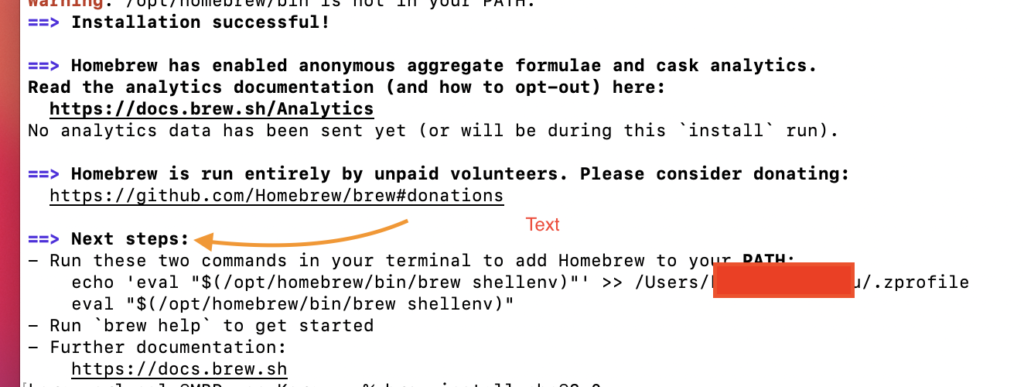

While on Mac these filenames would actually refer to the same underlying file.

On Linux, it is possible to create 2 separate files: test and Test, Prompt you to give Docker access to personal areas of your home directory such asīy default, Mac file systems are case-insensitive while Linux is case-sensitive. If you share the whole of your home directory into a container, MacOS may Such as cache directories or databases, the performance will be muchīetter if they are stored in the Linux VM, using a data volume On the host while being executed in containers.
INSTALL DOCKER MAC VIA HOMEBREW CODE
Shared folders are designed to allow application code to be edited Sharing too many files can lead to high CPU load and slow Introduces overhead as any changes to the files on the host need to be notified Share only the directories that you need with the container. Tips on shared folders, permissions, and volume mounts Remove a Directory: Click - next to the directory you want to removeĪpply & Restart makes the directory available to containers using Docker’s Otherwise you may get Mounts denied or cannot start service errors at runtime.Īdd a Directory: Click + and navigate to the directory you want to add. If your project is outside this directory then it must be added Use File sharing to allow local directories on the Mac to be shared with Linux containers.Įditing source code in an IDE on the host while running and testing the code in a container.īy default the /Users, /Volume, /private, /tmp and /var/folders directory are shared. If you attempt to move a disk image to a location that already has one, you get a prompt asking if you want to use the existing image or replace it. You can also move the disk image to a different location. The default is 1 GB.ĭisk image size: Specify the size of the disk image.ĭisk image location: Specify the location of the Linux volume where containers and images are stored. Swap: Configure swap file size as needed. To increase the RAM, set this to a higher number. Memory: By default, Docker Desktop is set to use 2 GB runtime memory,Īllocated from the total available memory on your Mac.

Higher number to decrease, lower the number. To increase processing power, set this to a On the Advanced tab, you can limit resources available to Docker.ĬPUs: By default, Docker Desktop is set to use half the number of processorsĪvailable on the host machine. The Resources tab allows you to configure CPU, memory, disk, proxies, network, and other resources.

For more information, see Docker Compose V2. Use Docker Compose V2: Select this option to enable the docker-compose command to use Docker Compose V2. Open Docker Desktop dashboard at startup: Automatically opens the dashboard when starting Docker Desktop. Show weekly tips: Displays useful advice and suggestions about using Docker. This information helps Docker improve and troubleshoot the application. Send usage statistics: Docker Desktop sends diagnostics, crash reports, and usage data. Use gRPC FUSE for file sharing: Clear this check box to use the legacy osxfs file sharing instead. Include VM in Time Machine backups: Select this option to back up the Docker Desktop virtual machine. Start Docker Desktop when you log in: Automatically starts Docker Desktop when you open your session. On the General tab, you can configure when to start Docker and specify other settings: Menu bar and configure the runtime options described below. The Docker Preferences menu allows you to configure your Docker settings such as installation, updates, version channels, Docker Hub login,Ĭhoose the Docker menu > Preferences from the
INSTALL DOCKER MAC VIA HOMEBREW HOW TO
Welcome to Docker Desktop! The Docker Desktop for Mac user manual provides information on how to configure and manage your Docker Desktop settings.įor information about Docker Desktop download, system requirements, and installation instructions, see Install Docker Desktop.


 0 kommentar(er)
0 kommentar(er)
